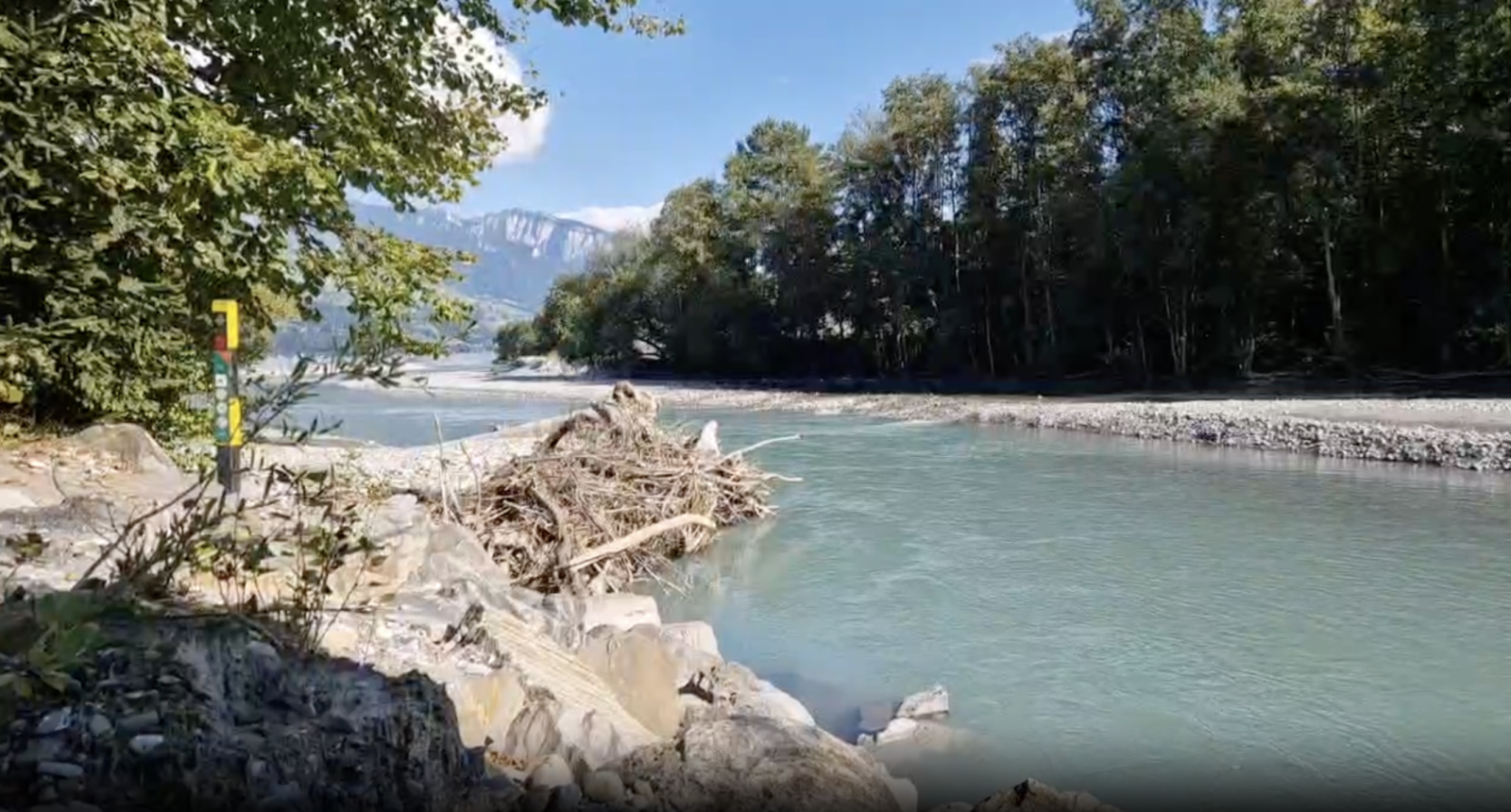Description
The Kanderdelta is an artificial delta created in the 18th century. Before its construction, the Kander River bypassed Lake Thun entirely. The river deposits substantial amounts of gravel into the delta and the lake, necessitating regular gravel extraction. At the same time, these gravel banks have become one of the few remaining breeding sites for the Little Ringed Plover in Switzerland.
The delta features a dynamic mix of floodplain forests, still and flowing waters, gravel banks, and steep riverbanks, forming a unique and valuable natural habitat - a rarity in Switzerland. This exceptional ecosystem lies close to the city of Thun, resulting in conflicts between recreational use and conservation efforts. While the lakeshore is accessible year-round, there are even dedicated barbequing areas at the outer edge of the delta. A ranger frequently patrols the area, offering useful information to visitors.
Although the Little Ringed Plover is the region's flagship species, over 200 bird species have been recorded here. The steep banks provide nesting sites for Common Kingfisher and White-throated Dipper. In the floodplain forests, breeding birds like Lesser Spotted Woodpecker, Common Cuckoo, and possibly Eurasian Hobby, which can be observed from April to September, find their habitats. Golden Oriole and Common Nightingale are relatively common, possibly you might see a Black-crowned Night Heron or Little Egret. Squacco Heron has also been observed.
Waders and waterbirds use the delta as a stopover during spring and autumn migrations. The Common Greenshank is among the most frequent visitors. Other common sightings during migration seasons include Wood Sandpiper, Green Sandpiper, Common Ringed Plover, and Little Stint. Less common species like Ruddy Turnstone and Temminck's Stint make appearances. During these times, the reeds are utilized by Penduline Tit and Western Marsh Harrier.
In spring, the delta additionally hosts Common Redshank and Ruff, as well as Whimbrel and Mediterranean Gull. Inland, Common Redstart finds refuge in the floodplain forest. Later in spring and into summer, the Wood Warbler appears here, and over the lake, migrating Black Tern can be spotted. Exceptional sightings include its relatives, the White-winged Tern, Whiskered Tern, Little Tern, Gull-billed Tern, and Sandwich Tern.
In late summer, the rare Sanderling is occasionally reported, while from September through May, Common Shelduck can be seen resting on the lake. Autumn brings irregular sightings of Grey Plover, followed later by the more frequent Dunlin. From winter to spring, Northern Shoveler and Eurasian Wigeon rest on the lake, but rarer birds are also possible, as one sighting of Long-tailed Duck proves.
The Kanderdelta is also a hotspot for rare waders. Eight confirmed sightings of Eurasian Oystercatcher have been recorded in April and June. Other notable species include Red Knot, Avocet, Kentish Plover, and Stone-curlew. Additional rarities such as Tawny Pipit, Great Northern Diver, Icterine Warbler, European Golden Plover, Greater Short-toed Lark, Red-necked Phalarope, Slavonian Grebe, Red-rumped Swallow, Arctic Skua, Great Skua, Sabine's Gull, and Jack Snipe have also been observed.
Details
Access
The Kanderdelta is easily accessible by bus from Thun (stop: Einigen, Kanderbrück). A parking lot is also available a few hundred meters away (Press P on the map). The area can only be explored on foot via a narrow path. This trail is not marked on maps and leads along the strictly protected Kander (1), where the Little Ringed Plover nests on the gravel banks, through floodplain forests, and past a still water body created by gravel extraction (Unteres Kandergrien), which is often visited by herons (2), to the delta (3).
Depending on the water level, the 30 to 40-meter-wide shoreline strip of the delta can be walked on. However, it’s obviously preferable not to disturb or approach any wading birds that might be present. On the other side of the Kandergrien, there is a meadow for lounging (4) with a good view of the lake, and a kiosk operates there during the warmer months.


